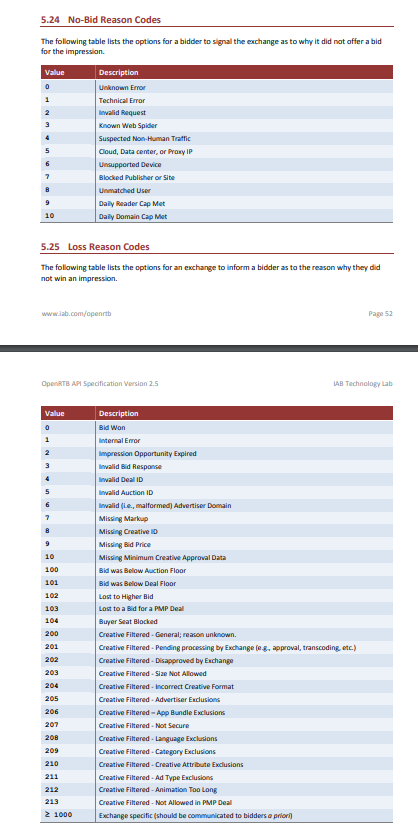Flaws of Prebid and How it Impacts Brand Safety
Prebid protection gives buyers a false sense of security from invalid traffic. In this AiThority.com article, we’ll examine how prebid works—or doesn’t work—for brand safety.
To level set: The RTB protocols were put in place so that sellers and buyers could “talk” to each other about the details of an auction. Sellers, of course, want buyers to see what they have to sell. All of this happens in milliseconds and data is provided in the bid request to help with the decision.
For Brand Safety blocks, the buyer receives only one code: blocked publisher or site (code 7). The seller will learn that they did not win from either 203 “Site Not Allowed” or 209 “Category Exclusions.”
How is that determined? It can be as simple as a domain inclusion or exclusion list, meaning your site was listed as a domain that an advertiser wanted to stay away from or did not make the short list of publishers they wanted to focus on. You got Seven-ed!
 Although it can also be as complicated as avoiding a specific keyword. (I say complicated, but I really mean vague. Actually, I really mean misunderstood.)
Although it can also be as complicated as avoiding a specific keyword. (I say complicated, but I really mean vague. Actually, I really mean misunderstood.)
Last year around the first wave of Covid, many people were reporting that blue cloud banners were more noticeable. (These were Double Verify blue cloud house ads.) This led to misguided outcries of “News is being defunded!” and “Brand safety tech sucks!”
If you saw the blue cloud banner, guess what: the ADVERTISER WON THE BID, so that publisher DID g*******. The advertiser would rather run a blue cloud banner than their advertisement adjacent to Covid-related content.
So news is not being defunded when you see that banner.
What is unclear is, if the client did not want to be adjacent to Covid-related content, why did they even win the bid? Why was it not blocked before the auction was run?
This is something that exposes the inability of brand safety to work effectively in a programmatic auction as a prebid solution. Signals like domains and categories are self-declared. The prebid technologies rely on that and also the url address.
In the auction the url is shared. The url has character limitations so the brand safety vendor can only detect what it can see.
For example the following urls would likely return the following actions:
WSJ.com WON AUCTION!
WSJ.com/lifestyle/nazis_suck. AVOIDED
WSJ.com/lifestyle/seven_nazis_were_captured_and_killed AVOIDED
WSJ.com/lifestyle/i_think_everyone_should_hug_and_love_nazis WON AUCTION , THEN BLOCKED
In the last example. The word “nazi” was not seen until the auction was won and the Brand Safety vendor had the full url exposed to make a decision. That type of block happens roughly 35% of the time, according to Double Verify. Let that sink in for a moment. 35% of the time a block happens post bid. So if anyone should be angry, it should be the Advertiser that just paid for a blue cloud banner and a brand safety cost.
This means that 35% of the time you are paying for the media that you were trying to avoid. Though you did avoid 65% of that media, you paid a brand safety vendor for both the 65% and the 35%, AND you paid the media costs of that 35%.
This is not a vendor problem. This is a signal problem. All prebid is reliant on the same fundamental signals. The most common category that has brand safety problems is news.
Auto classification is broken up into quite a few content categories.

What about News?
 News has three IDs: national, international and local news. Even with a more flushed out categories system, you will still have some fake declarations, however, you will be able to have more inventory that was prevented based on some broad signals.
News has three IDs: national, international and local news. Even with a more flushed out categories system, you will still have some fake declarations, however, you will be able to have more inventory that was prevented based on some broad signals.
The 65% avoidance that you paid for could have been free. All of the DSP’s have the same capabilities to recognize the url, the content category, and the domain. And all these solutions are free!
Remember the bid mechanics. All vendors have access to the same signals.
A misconception is that the brand safety vendors always look at words on the page. Do vendors look at the full page? Some do BUT not in realtime or prebid environments. If they do, it is post bid. They look at a small sample, and they cache the page. If verification vendors cached every page, they would have their board of directors screaming at them to become a search engine company instead of a verification company. There’s a bit more money in that game.
My recommendation: First , I would love for you to stop overblocking and use more inclusion/exclusion site list but it is your brand so you decide but if you do block keywords use the free prebid options that your DSPs offer and then use a solution post bid vendor. Urge the industry to adopt better content categorizations for news. Advertisers, while the first amendment is important, it is not your responsibility to fund it.
Make sure you support news outlets that are legit news organizations and respect the fundamentals of journalism.

Comments are closed.